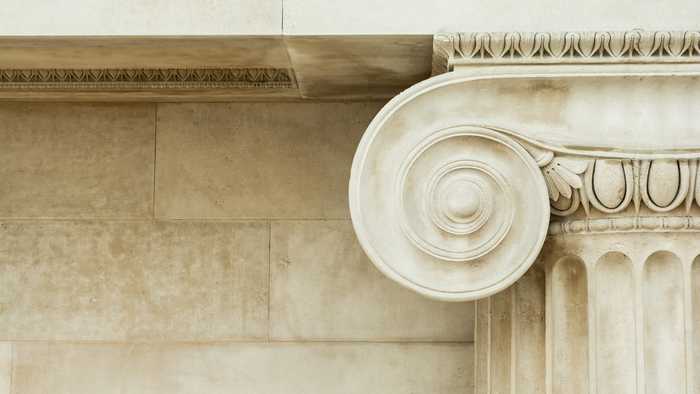Proportion in Classical Architecture
The Vitruvian Man is one of the most iconic images in the world. It also raises the most questions: Who is he? Why does he have twice as many limbs? You almost certainly won’t believe the answer. It’s all to do with architecture.
Vitruvius is arguably the most important architect in history. Not because of what he built, but what he wrote. The Roman military engineer and architect is believed to have been alive in the 1st century BC and have worked with Emperor Julius Caesar. Vitruvius is the author of the only surviving architectural book from Antiquity, De Architectura. In its pages, Viturvius discusses the fundamental principles of Roman and Greek architecture, the foundations of classical design.
But, most interestingly, Vitruvius wrote about proportion. So what is so fascinating about the proportion in architecture?
WHY IS PROPORTION IMPORTANT?
Proportion is core to classical architecture. Vitruvius argues that each element of a building must be strictly and relationally proportional to every other part of the building. This creates an overall feel of harmony, elegance, and strength.
WHICH PROPORTIONS CREATE BEAUTIFUL ARCHITECTURE?
According to Vitruvius, the ancient architects who created the rules of classical architecture based them on the proportions of the human body.

"For the human body is so designed by nature that the face, from the chin to the top of the forehead and the lowest roots of the hair, is a tenth part of the whole height; the open hand from the wrist to the tip of the middle finger is just the same; the head from the chin to the crown is an eighth, and with the neck and shoulder from the top of the breast to the lowest roots of the hair is a sixth; from the middle of the breast to the summit of the crown is a fourth.
If we take the height of the face itself, the distance from the bottom of the chin to the underside of the nostrils is one third of it; the nose from the underside of the nostrils to a line between the eyebrows is the same; from there to the lowest roots of the hair is also a third, comprising the forehead. The length of the foot is one sixth of the height of the body; of the forearm, one fourth; and the breadth of the breast is also one fourth.
The other members, too, have their own symmetrical proportions, and it was by employing them that the famous painters and sculptors of antiquity attained to great and endless renown."
So, it appears the naturally harmonious proportional relationships of the human body stand to assist the development of the perfect structure
"Therefore, since nature has designed the human body so that its members are duly proportioned to the frame as a whole, it appears that the ancients had good reason for their rule, that in perfect buildings the different members must be in exact symmetrical relations to the whole general scheme."

In the early 15th century, Vitruvius’ book rose in popularity as architects’ interest turned to Rome and simple, classical design at a time when gothic design was common. It was the key to understanding Roman and Greek architecture. At that point, many architects took to imitate classical design, starting with Brunelleschi and Bramante.
But, beyond building design, other architects started penning their own books, such as The Art of Building by Giovanni Battista (1452). This treatise combined Vitruvius’ knowledge with Battista’s own “archaeological” investigation.
In this period of renaissance, architects were in full swing of designing and building within the rules of proportion and incorporating other structural and aesthetic traits of classical architecture.
But how does this relate to the Vitruvian man?
The well-known polymath, Leonardo Da Vinci, was born during the polymath and – in 1490 – drew a human man according to the proportions described in Vitruvius’ book. As a result, the Vitruvian Man became a representation of the renaissance, as a combination of history, architecture, maths, anatomy, art, and more.
What’s more, the renaissance became the foundation for Neoclassical style, which has been a popular architectural style in the centuries following. In fact, it is still seen in designs and build today. From pediments and cornices, to dentils, dropped keystones, and Venetian windows, classical style remains a large part of modern-day design.
For more ways that nature inspires architectural and interior design, you can sign up to my monthly newsletter. Equally, if you have a new building project or if you would like to incorporate classical design into your living space, you can get in touch with Wouter for a free consultation.
Posted by Wouter De Jager on November 7th 2022

